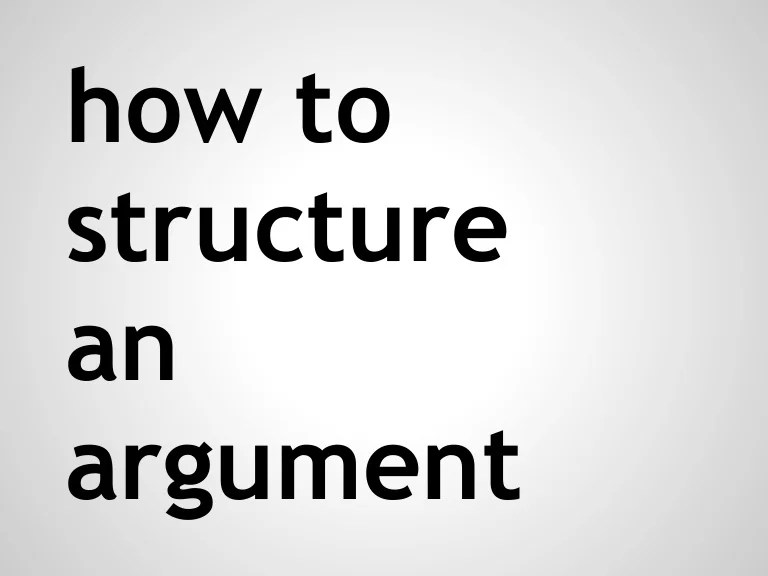The structure of argument 10th edition – The Structure of Argument, 10th Edition, provides an unparalleled framework for understanding and constructing persuasive arguments. This authoritative guide empowers readers to navigate the complexities of logical reasoning, identify fallacies, and effectively evaluate arguments across diverse fields.
With its comprehensive approach, this text offers a thorough exploration of the components of an argument, categorizes different argument types, and examines the practical applications of argument analysis in real-world scenarios.
Introduction
An argument is a series of statements that are intended to support a particular claim. The structure of an argument is important because it determines how effectively the argument will achieve its goal of persuading the audience. An argument that is well-structured is more likely to be persuasive than an argument that is poorly structured.
The main components of an argument are the claim, the evidence, and the reasoning. The claim is the main point that the argument is trying to prove. The evidence is the data or information that supports the claim. The reasoning is the explanation of how the evidence supports the claim.
Components of an Argument
Claim
The claim is the main point that the argument is trying to prove. It should be a clear and concise statement that is supported by the evidence.
Evidence, The structure of argument 10th edition
The evidence is the data or information that supports the claim. It can be anything from statistics to personal anecdotes. The evidence should be relevant to the claim and should be presented in a way that is easy to understand.
Reasoning
The reasoning is the explanation of how the evidence supports the claim. It should be clear and concise, and it should show how the evidence logically leads to the claim.
Types of Arguments
Deductive Arguments
Deductive arguments are arguments in which the conclusion is necessarily true if the premises are true. The most common type of deductive argument is the syllogism, which has the following form:
All men are mortal.
Socrates is a man.
Therefore, Socrates is mortal.
Inductive Arguments
Inductive arguments are arguments in which the conclusion is not necessarily true, but is supported by the evidence. The most common type of inductive argument is the generalization, which has the following form:
I have seen three black crows.
Therefore, all crows are black.
Abductive Arguments
Abductive arguments are arguments in which the conclusion is the best explanation for the evidence. The most common type of abductive argument is the inference to the best explanation, which has the following form:
The grass is wet.
The best explanation for the grass being wet is that it rained last night.
Therefore, it rained last night.
Fallacies in Argumentation

Fallacies are errors in reasoning that can weaken or invalidate an argument. There are many different types of fallacies, but some of the most common include:
- Ad hominem attacks: attacking the person making the argument rather than the argument itself.
- Straw man arguments: misrepresenting the opponent’s argument in order to make it easier to attack.
- Begging the question: assuming the truth of the conclusion in order to prove the conclusion.
- Circular reasoning: arguing in a circle, where the conclusion is used to support the premises and the premises are used to support the conclusion.
Evaluating Arguments

When evaluating an argument, it is important to consider the following criteria:
- The strength of the evidence
- The validity of the reasoning
- The presence of fallacies
An argument that has strong evidence, valid reasoning, and no fallacies is more likely to be persuasive than an argument that lacks these qualities.
Applications of Argument Analysis: The Structure Of Argument 10th Edition

Argument analysis is a valuable skill in a variety of fields, including:
- Law
- Politics
- Business
- Education
By understanding the structure of arguments and the fallacies that can weaken them, we can become more effective communicators and critical thinkers.
Question & Answer Hub
What is the main purpose of The Structure of Argument, 10th Edition?
To provide a comprehensive framework for understanding, constructing, and evaluating arguments.
What are the key components of an argument?
Claim, evidence, and reasoning.
How can I avoid fallacies in my arguments?
By recognizing common fallacies and understanding how to counter them.
What are the practical applications of argument analysis?
In various fields such as law, politics, business, and everyday decision-making.